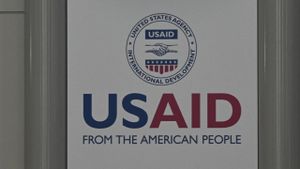Parachute operations involving Delta Force have always been fraught with risk, but one recent incident has revealed the unpredictable dangers of airborne operations for even the most elite soldiers. Historically, Delta Force conducts HALO (High Altitude, Low Opening) jumps, which are known for their procedural precision and lower risk. But when commanders opted for static line jumps during adverse weather conditions, disaster struck.
On what was meant to be just another routine jump, the squadron faced injury and potential catastrophe due to miscalculations involving winds at the drop zone. The static line parachuting method, typically safe when performed under the right conditions, became perilous when winds were underestimated. A safety officer on site applied the wrong allowable wind velocity for the type of jump, leading to severe outcomes.
One Delta soldier suffered being slammed to the ground, losing consciousness as winds carried other jumpers across the drop zone. Recounting the experience, retired Master Sergeant George Hand, who now works as an intelligence analyst, reflected on the day with both horror and humor. "Was my parachute open?" was the half-hearted question from one of his injured comrades, showcasing the mix of disbelief and irony common among soldiers facing life-threatening situations.
The injuries were significant—broken bones, concussions, and other traumas were reported. These occurrences not only affected the physical welfare of the soldiers involved but also temporarily compromised the squadron’s deployability. This was not just another day of training; it was one marked by chaos and the pressing need to evaluate safety protocols.
According to Hand, the jump day quickly became infamous. "There I was, and I could have died!" he recalled, presenting this mantra shared by many who have experienced near-fatal parachute incidents. The high winds, exceeding the safe limits for static line jumps, transformed what was planned as routine training for seasoned operatives into one filled with fear and injuries.
The HALO parachute system operates under different constraints compared to static line jumps, allowing for engagement with higher ground winds. Whereas HALO jumps can safely account for winds up to 13 knots, static line jumps require much calmer conditions, limited to nine knots. Failure to adhere to these parameters led to severe consequences for the squadron.
After the chaotic day, the squadron recognized the gravity of the situation and moved swiftly to curtail static line jumps altogether. The rash of injuries caused by the miscalculated protocols prompted leaders to reevaluate training practices across the board. While many soldiers may have viewed static line jumps as basic, the reality of their inherent dangers struck hard during this unfortunate event.
Hand's perspective, enriched by his experiences, speaks to the broader concerns of safety within military parachuting. His thoughts capture the unpredictability of airborne operations: "If your main parachute fails to open correctly, you have the rest of your life to deploy your reserve parachute." This stark reminder encapsulates the quintessential risk faced by paratroopers and the severity of the decisions made by the leadership overseeing such training.
The move away from static line jumps marks a significant transformation within Delta Force’s training regime, highlighting the continuous pursuit of safety and operational efficiency. While the soldiers understand the noble pursuit of maintaining operability, they also recognize the importance of implementing rigorous safety checks to prevent similar incidents from recurring.
For those involved, the legacy of this incident serves as both a caution and a lesson learned. Each jump remains etched as part of their shared history, underscoring the unpredictable nature of their duty. Delta Force and its members continue their rigorous training, but with renewed emphasis on safety protocols aimed at keeping them prepared but also secure.
This harrowing tale of parachuting incidents not only brings light to the dangers faced by elite soldiers but also stresses the commitment to learning and adapting from each experience. The safety of personnel must be prioritized above all else, ensuring each skyward leap is as calculated and secure as possible moving forward.



